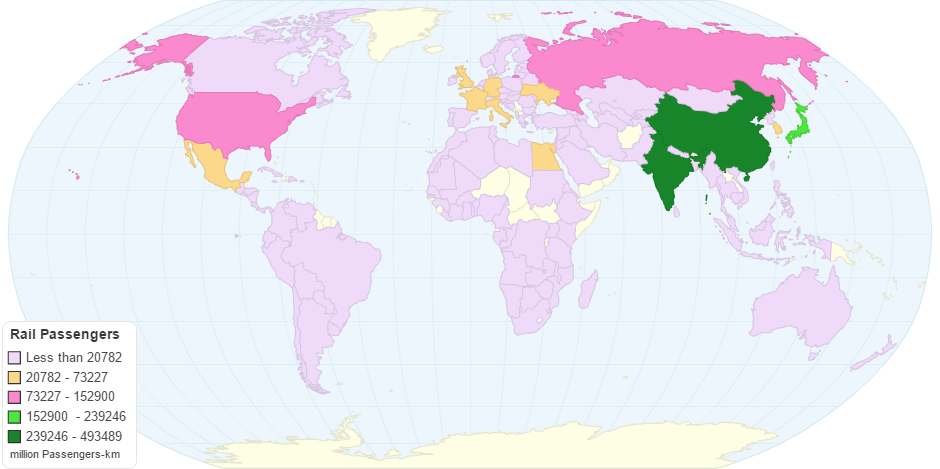This chart shows Rail Passengers by Country.
A train is a form of rail transport consisting of a series of vehicles that usually runs along a rail track to transport cargo or passengers. Motive power is provided by a separate locomotive or individual motors in self-propelled multiple units. Although historically steam propulsion dominated, the most common modern forms are diesel and electric locomotives, the latter supplied by overhead wires or additional rails. Other energy sources include horses, engine or water-driven rope or wire winch, gravity, pneumatics, batteries, and gas turbines.
A passenger train is one which includes passenger-carrying vehicles which can often be very long and fast. One notable and growing long-distance train category is high-speed rail. In order to achieve much faster operation over 500 km/h , innovative Maglev technology has been researched for years.
A freight train uses freight cars to transport goods or materials. Freight and passengers may be carried in the same train in a mixed consist.
Rail cars and machinery used for maintenance and repair of tracks, etc., are termed maintenance of way equipment; these may be assembled into maintenance of way trains. Similarly, dedicated trains may be used to provide support services to stations along a train line, such as garbage or revenue collection.
There are various types of trains that are designed for particular purposes. A train can consist of a combination of one or more locomotives and attached railroad cars, or a self-propelled multiple unit. Trains can also be hauled by horses, pulled by a cable, or run downhill by gravity.
9 years ago

